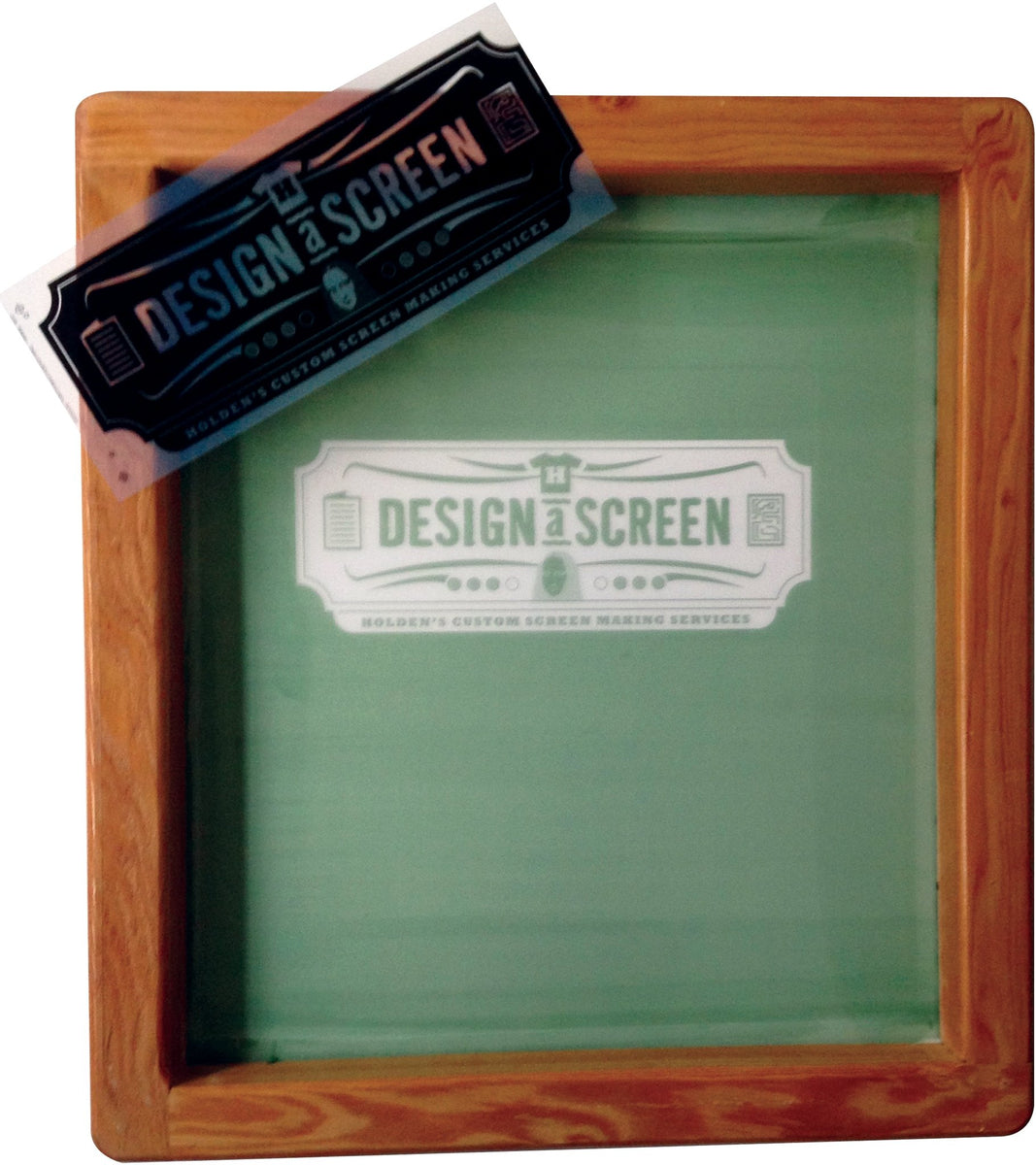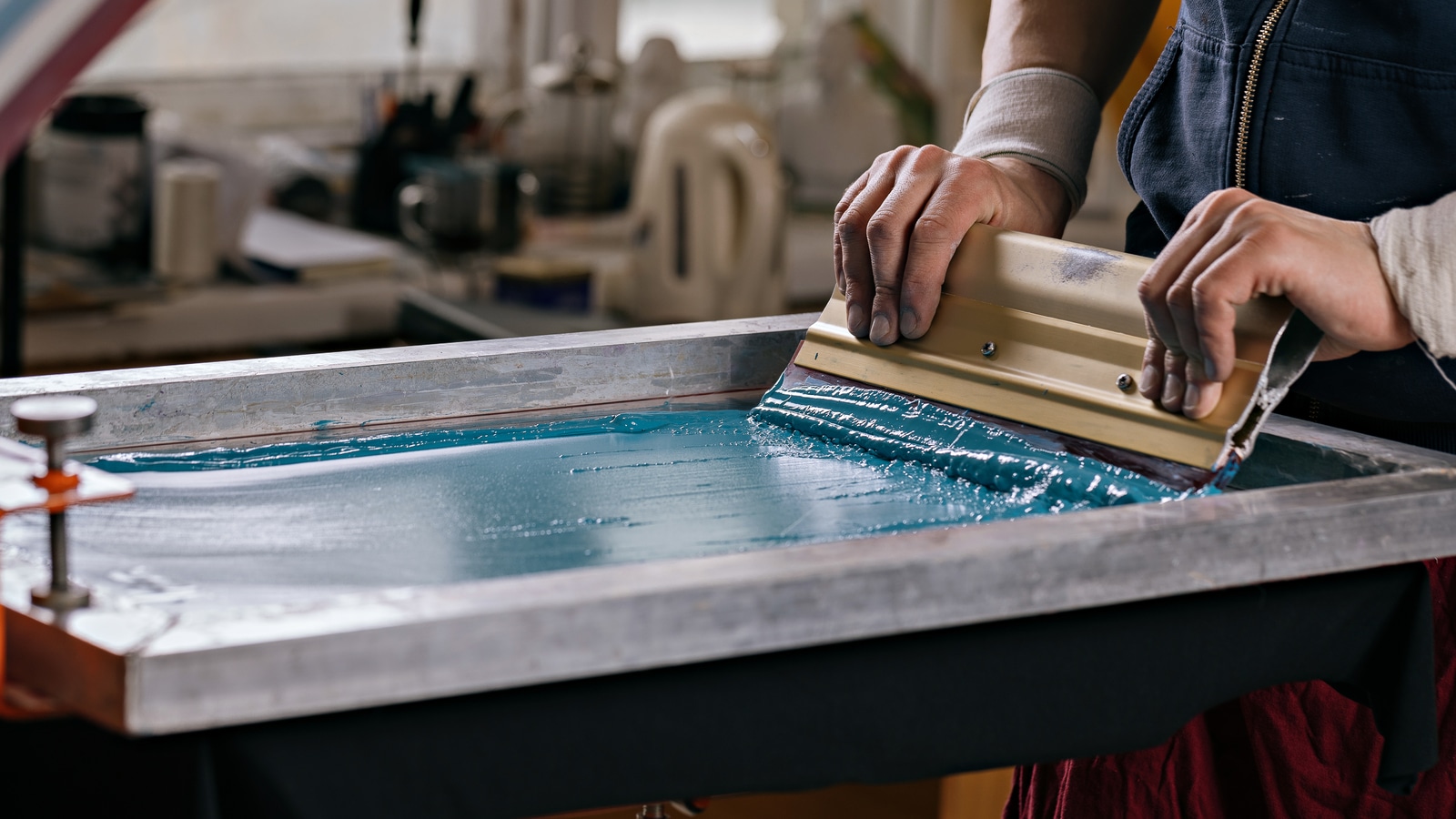Silk Screen Printing for Bold and Lasting Designs
Silk Screen Printing for Bold and Lasting Designs
Blog Article
Screen Printing Uncovered: Whatever You Need to Understand About Tee and Garment Printing Methods
Screen printing is a fascinating technique that incorporates art with strategy, providing unlimited opportunities for creative thinking. Prepared to discover the important components that make screen publishing an art type?
The Essentials of Screen Printing: How It Functions
When you plunge right into screen printing, you'll discover it's both an art and a scientific research. At its core, display printing entails creating a pattern, or display, that enables ink to pass through only in particular areas.
Following, you'll mix your inks and prepare your printing surface area. Setting the screen over the textile, then utilize a squeegee to press ink with the screen onto the garment. This process calls for accuracy, as you want clear, vivid prints. After printing, you'll heal the ink with warmth, ensuring it sticks to the fabric and lasts through cleans. Each action is vital, and grasping them will certainly elevate your screen printing skills, transforming straightforward garments right into distinct, expressive pieces.
Kinds of Screen Printing Strategies
When you understand the basics of display printing, it's time to explore the numerous techniques that can boost your designs. One preferred technique is standard display printing, where ink is pushed with a stenciled screen.
If you're going for great information, take into consideration discharge printing. This technique removes dye from the material, leaving a soft, vintage look. One more choice is plastisol printing, understood for its durability and vivid shades, making it a favored for lots of brand names. Experiment with halftone printing to develop slope impacts and intricate designs. Each technique has its distinct beauty, so don't wait to attempt them out to locate what fits your style best!
Vital Devices for Display Printing
To attain stunning results in display printing, having the ideal equipment is fundamental. You'll require a sturdy display printing frame, which holds the mesh that moves your design onto the garment. Next, invest in premium mops; these are essential for using ink equally across the screen.
Choosing the Right Inks and Products
When choosing inks and products for display printing, you need to consider the kind of ink that functions finest for your task. Consider material compatibility to ensure your designs look great and last lengthy. Discover environment-friendly ink choices to make your printing process extra sustainable.
Sorts Of Display Inks
Choosing the best screen ink is necessary for achieving lively, long lasting prints that satisfy your project's demands. There are several sorts of display inks to analyze. Plastisol ink is popular for its convenience and convenience of use, offering excellent color opacity on dark materials. Water-based ink, on the various other hand, offers a softer feel and is environmentally friendly, making it excellent for those aiming to minimize their environmental effect. Discharge inks get rid of color from the fabric, leading to a soft, vintage appearance but require specific handling. Specialized inks, such as glow-in-the-dark or metal, can add special results to your layouts. Examine your task needs and pick the ink that straightens finest with your wanted result.

Material Compatibility Factors To Consider
Comprehending fabric compatibility is essential for achieving high-grade display prints, especially since different products react distinctively to various inks. Constantly examine your inks on example material to guarantee they adhere effectively and maintain color honesty. Additionally, maintain in mind that material weight and appearance can affect the final outcome, so choosing the ideal ink and material combination is vital for your task's success.
Eco-Friendly Ink Options
Environmentally friendly inks are coming to be a popular choice for display printers who intend to decrease their environmental influence while maintaining quality. When choosing inks, think about water-based inks, which are less harmful and much easier to tidy up contrasted to typical solvents. These inks bond well with textiles, providing vivid outcomes without toxic chemicals. You could likewise check out eco-solvent inks that use fewer unpredictable natural compounds (VOCs), making them a more secure choice for both your health and the planet.
In addition, try to find inks made from sustainable sources, such as soy or vegetable-based options. By picking the appropriate inks and products, you'll not only produce magnificent layouts but additionally add to a much more sustainable printing procedure. Make the button, and your prints will reflect your dedication to the environment!
Preparing Your Design for Display Printing

Submit Layout Demands
To assure your design looks sharp and vivid on textile, you'll need to pay close interest to submit format needs for screen printing. Make certain your design has a clear history to protect against unwanted white edges on your prints. Maintain shade modes in mind; CMYK is common for screen printing, so convert your RGB designs accordingly.
Color Separation Techniques
Color splitting up is a vital action in preparing your design for display printing, and mastering it can significantly boost your print high quality. You'll require to break your style right into specific shades, as each color requires a different screen throughout printing. Begin by determining all the colors in your layout and develop layers for each one. You can utilize software application like Adobe Photoshop or Illustrator to separate and separate colors efficiently. Be specific to conserve each layer as a separate documents, usually in a layout like TIFF or PSD. This accuracy not just ensures precise color depiction however also streamlines the printing procedure. By taking note of color separation, you'll attain expert and dynamic lead to your screen-printed garments.
Resolution and Dimension
Achieving the most effective lead to screen printing starts with assuring your style has the appropriate resolution and size. Preferably, your artwork needs to go to least 300 DPI (dots per inch) for sharp, clear prints. Your final product might look amateur and pixelated. if you utilize lower resolution.
When it comes to size, take into consideration the measurements of your print area. Layout your artwork to match the final print dimension, preferably producing it in the real measurements you'll be printing. This means, you'll stay clear of any type of unexpected scaling issues.
Always check your style in both vector and raster formats. Vector graphics can be scaled without shedding quality, making them excellent for screen printing. Preparing appropriately will guarantee your design looks impressive on every garment!
Step-by-Step Screen Printing Process
Screen printing is a dynamic process that allows you to create dynamic layouts on various surface areas. To get begun, you'll require a display, emulsion, and your selected ink. Initially, prepare your display by cleansing it completely. Next off, use the emulsion equally and allow it completely dry in a dark area. Once completely dry, reveal your screen to light with your style put on it, which will harden the solution where the light hits, creating a pattern - screen printing kit.
After rinsing the unexposed solution, your screen prepares. Establish it up on your printing surface and align your garment below it. Pour ink onto the screen and make use of a squeegee to push the ink via the stencil onto the material. Lift the display meticulously and allow the print dry. Heal the ink making use of heat to guarantee longevity. That's it! You have actually efficiently screen published your design.
Tips for Effective Display Printing Projects
While you're diving into your display printing projects, bear in mind that prep work is key to success. Start by gathering all your products-- inks, garments, displays, and squeegees. A clean work area assists stop undesirable errors, so clean before you begin.
Following, verify your art work is high-resolution and correctly sized for your garment. Evaluate your display for correct exposure and tidy it completely to stay clear of smudges. When blending your inks, adhere to the producer's guidelines to accomplish the best uniformity.
During printing, use even pressure with your squeegee for consistent results. Do not hurry; take your time to validate custom screen printing each print satisfies your requirements. After printing, let your garments dry entirely before taking care of or packaging them.
Finally, constantly keep a sample of your benefit future referral. By doing this, you can examine your progression and improve your techniques over time. Delighted printing!

Frequently Asked Questions
The length of time Does It Require To Establish up a Display Printing Work?
Establishing a screen printing work usually takes about thirty minutes to an hour. You'll prepare the displays, mix inks, and change the press. The moment differs based upon complexity and experience, so remain organized!
Can I Print on Different Fabric Enters Utilizing the Exact Same Technique?
Yes, you can print on various fabric types making use of the same method, yet you'll require to readjust your inks and setups. Some textiles absorb ink in different ways, so experimenting assurances the ideal results for each and every material.
What Prevail Blunders to Stay Clear Of in Display Printing?
When screen printing, prevent common errors like using the incorrect ink, disregarding correct exposure times, or avoiding pre-press checks. Constantly evaluate your setup and keep tidy screens to assure top quality results each time.
Just How Can I Effectively Tidy and Maintain My Screen Printing Tools?
To effectively clean and maintain your screen printing devices, you must regularly clean screens with suitable solvents, inspect squeegees for wear, and guarantee all devices are saved dust-free and completely dry. Uniformity enhances and protects against pricey repairs performance.
Is Screen Printing Eco-friendly Contrasted to Other Approaches?
Screen printing can be more eco friendly than various other approaches, specifically if you use water-based inks and eco-conscious materials. By choosing lasting materials and techniques, you minimize waste and reduce your influence on the world.
Display Printing Uncovered: Everything You Required to Know Concerning Tee and Garment Printing Strategies
At its core, screen printing involves creating a stencil, or screen, that permits ink to pass with only in details locations. Setting the display over the material, then make use of a squeegee to press ink through the screen onto the garment. One preferred technique is standard screen printing, where ink is pressed through a stenciled screen.When picking inks and materials for screen printing, you require to take into account the type of ink that works finest for your job.
Report this page